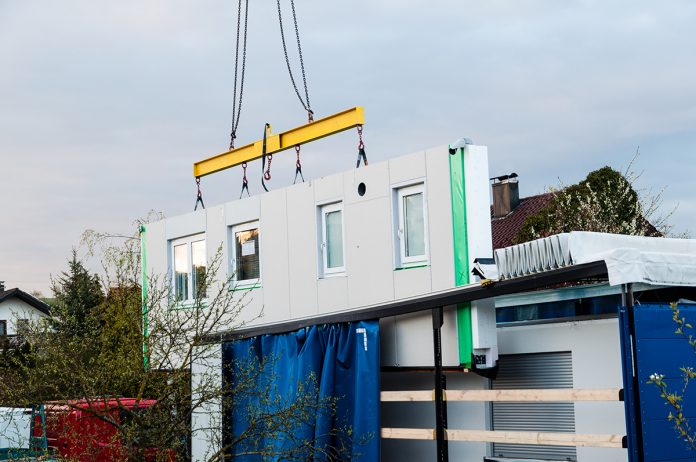When considering the different options for offsite and modular construction, it is important to treat the building as a single system rather than a collection of individual components, says Joanne Booth of Lucideon
There are many definitions of offsite manufacturing. The recently released Modern Methods of Construction (MMC) framework definition divides factory produced systems into seven categories:
- Category 1 – Pre-Manufacturing – 3D primary structural systems.
- Category 2 – Pre-Manufacturing – 2D primary structural systems.
- Category 3 – Pre-Manufacturing – Non-systemised structural components.
- Category 4 – Pre-Manufacturing – Additive manufacturing.
- Category 5 – Pre-Manufacturing – Non-structural assemblies and sub-assemblies.
- Category 6 – Traditional building product led to site labour reduction/productivity improvements.
- Category 7 – Site process led to labour reduction/productivity improvements.
The framework basically encompasses the use of composite, new and traditional materials and components, with extensive factory produced sub-assembly sections and components.
The factory build and the use of composite, new and traditional materials, means that there are no current standards in which these systems sit. As a result, there are no rules to follow to demonstrate that a finished product is functional, safe, efficient and, most importantly, conforms to Building Regulations.
An absence of standards can lead to a manufacturer choosing individual products and components that are themselves tested and CE marked, but are not tested as a system, and hence may not demonstrate the required performance when used in combination with other components and materials within a system.
When manufacturing a modular or panel-built construction, it’s important that the building is treated as a system and not as individual components. System testing is crucial as there is currently no standardisation for:
- Systems.
- Components.
- Materials.
- Connections and interfaces.
- Transportation and lifting.
- Stitching together or joining of panels and modules.
The lack of performance within a composite system can display itself with documented problems, for instance: incompatibility of metal corrosion and cell forming, and new materials with non-proven properties – this has recently been highlighted with the publicity around MgO boards causing corrosion of fixings and water ingress. Other problems can be caused by differential movements due to thermal and moisture expansions, and inadequate connection details; these are not covered by Eurocode design.
The industry should be joining forces to agree on methodologies for proving system performance which would satisfy all stakeholders, including designers, manufacturers, insurers and Building Control. There is a requirement for standardisation of certain aspects of the building construction, for example, connecting modules to modules, panels to panels and floors to walls. MMC is attracting many different designs, some of which utilise a mix of materials and hence require an understanding of composite behaviour; light steel frame (LSF) and timber panels or cross-laminated (CLT) and glued laminated timber (Glulam).
To understand the whole system performance, including environmental and structural, the entire system requires assessing, as opposed to using a pick-and-mix approach of individually tested components.
There needs to be a commitment to quality build and longevity of performance in this rapidly expanding sector.
Find out about Lucideon and its testing services for offsite and modular buildings using the website and/or contact details below.
Joanne Booth
Business Manager – Construction
Lucideon
Tel: +44 (0)1782 764410
Please note: this is a commercial profile.














